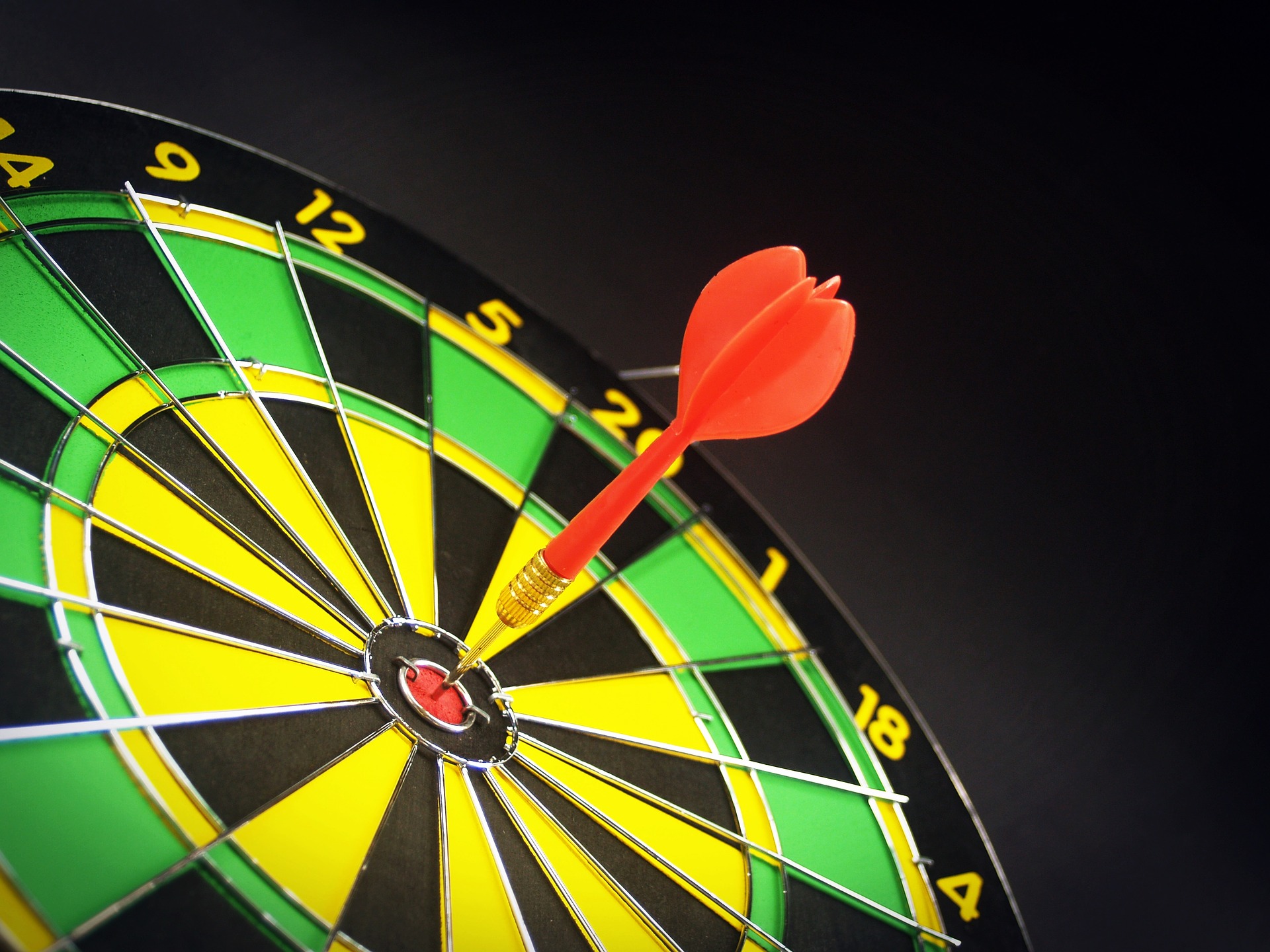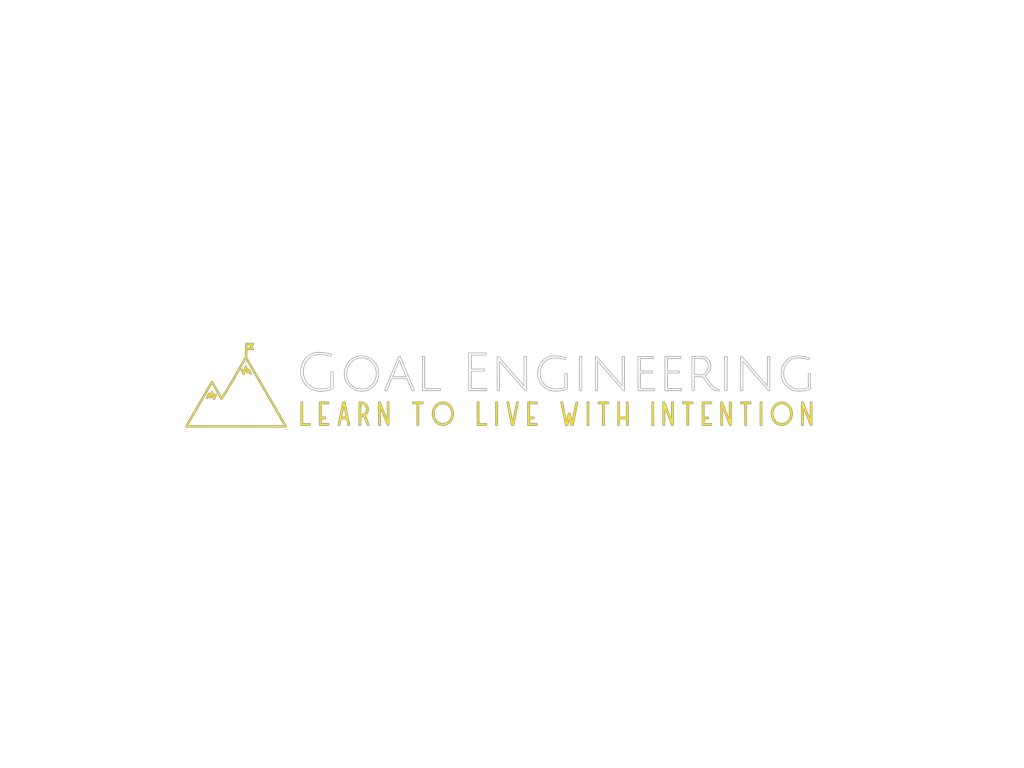If you want to set SMART goals, you know that the first step is to make them specific. The trouble is, even the internet doesn’t currently have any specific answers on how to do this! I’m going to fix that for you today though so you can set specific goals and know just where you want to go!
To set specific goals, make sure they have numbers associated with them. To do that, remember the TAD acronym:
- Time – Establish a chunk of time you’ll work on your goal each day.
- Amount – Add an amount that you want to do, like 3x per week.
- Date – Set a date by when you want to accomplish your goal.
The definition of specific is “clearly defined or identified, clear-cut, definite, limited, distinct, exact, or precise.” Setting a time, amount, and date for each of your goals is all of these!
I like TAD because the word itself means “a small amount,” and using these steps to make your goals specific is a small thing that will have a big impact!
What’s even more amazing about this is that if you follow these steps to set specific goals, you won’t even need to go through the rest of the SMART acronym, your goals will already be SMART! You can do the same work in ⅕ of the time!
If you have a time, amount, and date to your goal, that automatically makes it measurable, which is what the “M” in SMART stands for. You can measure the amount you’ve done something, how much time you’ve put into it, and if you’ve accomplished your end goal by the date you establish.
The “A” represents attainable goals. You’re forced to do this if you have to think of a date and amount and time because you’re going to know your own limits. You know, for instance, that you can’t do 100 push-ups today, so you’ll set out to do just 50.
Next comes making your goals realistic, which is what the “R” in SMART typically stands for. I’ve always thought this was kind of redundant because realistic and attainable mean almost the same thing. So this one is already taken care of!
By the way, the “R” doesn’t have to mean realistic. There are many things it can stand for, and you can see them in my article on SMART goals right here! If you check them out you’ll see that setting specific goals takes care of the rest of those, too!
Last is time-bound, which the time and date pieces of the TAD acronym already takes care of perfectly!
Making your goals specific is one of the most important ways set effective goals.
In Gary Keller’s book The ONE Thing, he helps you identify the one thing for each area of your life that, if you accomplished, will make everything else easier or unnecessary. If we think about a “ONE thing” for setting SMART goals, it’s got to be making them specific!
In other words, by setting specific goals, you automatically make them measurable, realistic, attainable, and time-bound as well. Which means you can complete all five steps of setting SMART goals in just one step!
Now, there’s more to learn than just what I’ve explained already. Let’s get into the details of how to set specific goals!
How to Add Time, Amounts, and Dates to Your Goals to Make Them Specific
“People are not lazy. They simply have impotent goals – that is, goals that do not inspire them.”
– Tony Robbins
I feel I should begin by mentioning that you must make sure that your goals inspire you. The details of setting specific goals are kind of technical so you might miss this crucial step and get bored. I’d hate for that to happen because of how much I’ve seen the power of good goals change my life.
If you’re not motivated by your goals, it’s going to be tough to keep going even if you make them specific.
To make sure your goals inspire you, just ask “is this something that I really want, or something that I think I should want based on what everybody else says?” for each of your goals. What really lights you up inside and makes you feel alive? Focus on those things.
And while we’re on the topic of motivation, the interesting thing about making your goals specific is that once you’ve gotten an inspiring goal, establishing a clear path to get there will actually increase your motivation to get there.
My friend Ben Hardy often talks about a few things that are necessary for you to see a goal through. One that he always mentions is that we need a clear path to achieving each goal. This is what setting specific goals will do for you!
Let’s start with the time aspect.
Time
This one is the most important. It can be the ONE thing for setting specific goals that takes care of the other components.
If you set a time that you want to work on something, say 30 minutes a day, and a time that you’ll have it done, you’ve already taken care of all three components of specific goals.
That’s really all there is to this part in the TAD acronym. You can try it yourself by asking three questions of your goal:
- How long do I want to work on this each day?
- What time (during the day) will I work on this?
- By when do I want to be done with this?
This works well for daily and weekly goals and long-term goals as well. You can say that you want to exercise for 30 minutes today, for instance. And you can also set that up as a routine for the long-term to help you lose weight.
I took advantage of this to lose 25 pounds in just six weeks a couple of years ago. It was part of a weight loss challenge for work, so the time had already been set up for me, all I needed to do was figure out how I would get there. Because I knew I only had six weeks, my competitive spirit launched me into a lot of exercise and dieting to lose all that weight so fast.
You can’t set up a time for everything though, which is why we need to look at the amount and date pieces as well.
Amount
We’ve already established that you can combine time and amount to set up an amount of time that you want to work on your goal. That’s powerful, but it doesn’t work for every goal.
What if you want to accomplish a certain number of repetitions to reach your goal?
I write blog posts, for instance and each one takes a different amount of time, so it’s better for me to focus on the amount of blog posts I publish.
Maybe you want to work your way up to being able to do 10,000 sit-ups in a row. You say you’ll do 100 a day for the first week then add 100 each week afterward. And if you think that 10,000 sit-ups in a row is impossible, it’s not, Steve Young’s dad did it!
To establish an amount for each of your goals, establish an end goal you want to reach and action steps you’ll take to get there. Then, ask yourself this question about your end goal:
How much do I want to be able to do or have when I’m done?
And this question about your action steps:
How many repetitions do I need to do each day, week, or quarter, to accomplish my end goal?
Remember, when trying to decide what “this thing” is, use The ONE Thing principle and ask yourself what will have the most impact. What will make everything else easier or unnecessary? You can do the same for your end goal also!
Let’s see how this works for a financial goal. I could say I want to add $2,000 to my monthly income by making three sales calls per day. I’ve got two amounts in there. One for the end goal, and another for the amount of sales calls I’ll make per day.
That’s just a quick example by the way. Take some time to figure out your most impactful actions and end goals.
Jim Carrey took advantage of the power of this principle to manifest $10 million and shoot himself into fame and success. He was poor but had a vision of becoming a great actor, so he wrote himself a check for $10 million for “acting services rendered” and kept it with him for years.
This specific amount he sought, and his hard work, paid off when, for his role in Dumb and Dumber, he made exactly $10 million.
We have just one last component left of specific goals, and that’s the date.
Date
This one’s really easy. All you have to do is ask yourself by what date you want to accomplish your goal. It’s even easier if you recognize that you can naturally break your goals into daily, weekly, quarterly, and yearly outcomes.
I might say, for instance, that by the end of this week I want to get one new client. And maybe that’s part of a bigger date-oriented goal of increasing my income by the end of a certain date.
To make it even more specific, I’d add in a time and amount. So instead I might say that I want to get one new client by making three sales calls per day.
Your goals are the most specific, and thus also the most measurable, attainable, realistic, and time-bound, when you have as many components of the TAD acronym as you can!
Sometimes you get lucky and a deadline for a project will automatically set up a date for you. The only thing left, then, is to add in the amount or time you’ll do your action steps each day.
You can also utilize the time component by establishing how many days in a row you want to do something.
An example of this is the 75 Hard mental toughness challenge that I’m working on right now. To improve my mental toughness I’m taking Andy Frisella’s challenge and exercising twice a day, drinking a gallon of water, reading 10 pages of a non-fiction book, taking a progress picture, and following a diet all for 75 days straight.
So far I’ve lost 10 pounds, I sleep better, and feel much more healthy. And although mental toughness isn’t measurable, I’d say I’ve seen a significant improvement there as well!
Bonus – Location
For even more preciseness with your goals, include the place you’re going to work on them. The added clarity will make it even more likely that you’ll stick to your goals because you’ll be able to envision yourself being in that spot and working on them.
When you set a specific place to do something and only use that place for that thing or activities like it, you can make it easier to stick to that activity each time you go to that place.
The easiest example is sleep. According to sleep experts, you want to only use your bed for sleep and almost nothing else. Don’t use your bed for studying, reading, watching TV, playing video games, or taking care of your pet praying mantis.
When you only use your bed for sleep, your brain will associate your bed with sleep. So when you go to lay down, it’ll be easier to fall asleep right away. You won’t be thinking about everything else that’s happened in that spot!
In psychological terms, we say that “neurons that fire together wire together.” In other words, you can use your memory of a location in combination with your memory of an activity to make it easier to do an activity in a specific location.
You might lift weights at the same gym every day, for example. Or have a specific chair for meditation, prayer, journaling, and studying. It even works with entertainment, too. I almost always use my basement only for movies and video games. When I’m down there, I’m relaxed because my brain knows that’s where I go to take a break.
To find the ideal location for your goals, simply ask yourself this question:
- Where can I go to work on this goal every time so that I won’t be disturbed and that I can establish as THE place that I work on this goal?
Remember, the more consistent you are with working on that goal in the same place, the easier it will be!
Examples of Specific Goals
One of the “4’s” in my 4-4-4 Goal-Setting System represents the 4 areas of life that you must set goals in. I wrote about these areas more in this article if you want to learn more.
The idea is that for balance and success, you must set goals in the following 4 categories:
- Faith & Spirituality
- Family & Friends
- Finances
- Fitness
When you work hard in each of these areas, they raise the others. This leads to an upward spiral of growth. It’s best to establish your own goals in each of these categories, but I share them now simply to give a framework we can use for some examples of specific goals.
For some of these areas of life, like faith and family, you can’t be specific in the end goal. It’s always possible, however, to be specific in the action steps, as I’ll show you.
I’ll also add letters representing each piece of the TAD acronym to show how the example is specific. If I have two in one piece of the example, I’ll show both of those by dividing them with a slash, like this: T/A.
And remember, TAD stands for Time, Amount, and Date.
Specific Goals in the Faith & Spirituality Category
- Grow spiritually by meditating 30 minutes (T/A) a day at 8 am (T) for 30 days straight (D).
- Increase my faith by reading one page of scriptures (A) and writing one page of thoughts (A) at 6:30 am (T) each day this quarter (D).
- Get a more positive belief system by reading a non-fiction book for 30 minutes a day (T/A) at 9 pm (T) until December 31 (D).
Specific Goals in the Family & Friends Category
- Get a new friend group this year (D) by going to three social events (A) each week (D) that the kind of people I want to be like would hang out at.
- Deepen my relationship with my kids in the next 90 days (D) by spending an hour (T/A) with them each night after dinner (T) and taking each of them out to eat once a month (T).
- Heal broken relationships in the next six months (D) by practicing loving-kindness meditation daily for 15 minutes (T/A) starting at 9:30 pm (T).
Specific Goals in the Financial Category
- Get a new job by asking three friends or family members (A) who they know that’s hiring every day for the next 30 days (D).
- Increase my income by $2,000 a month (A) by the end of this month (D) by making three sales calls per day (A).
- Get a 3.5 GPA (A) this semester (D) by studying for three hours a day (A/D) minimum.
Specific Goals in the Fitness Category
- Lose 12 pounds (A) in the next 12 weeks (D) by walking twice a day (A) in the morning and afternoon (T).
- Be able to bench press 250 lbs (A) by the end of this year (D) by doing arm workouts at the gym three times per week (A) at 6 am (T).
- Get down to 15% body fat (A) this quarter (D) by checking my body fat every day (A) at 7 am (T) and by following a diet every day (A).
Now It’s Your Turn
Sometimes it’s easier to see whether you’re reaching a goal by identifying what wouldn’t count as reaching it. Goals that are not specific, then, are ambiguous, fuzzy, undefined, uncertain, vague, general.
Think about our TAD acronym and establishing a time, amount, or date for every goal. It’s pretty easy to see that when your goals have these components, they are not undefined, vague, or ambiguous. Instead, they are specific, or “clearly defined or identified, clear-cut, definite, limited, distinct, exact, or precise.”
Being specific with your goals is pretty simple, but its effects are powerful. For one, doing it right eliminates all of the other steps to setting SMART goals.
But even more importantly, it gives you a clear path to reaching your goals. You’ll know the specifics of where you want to go and how to get there. And you’ll feel inspired at the knowledge that each of your goals is within reach.





